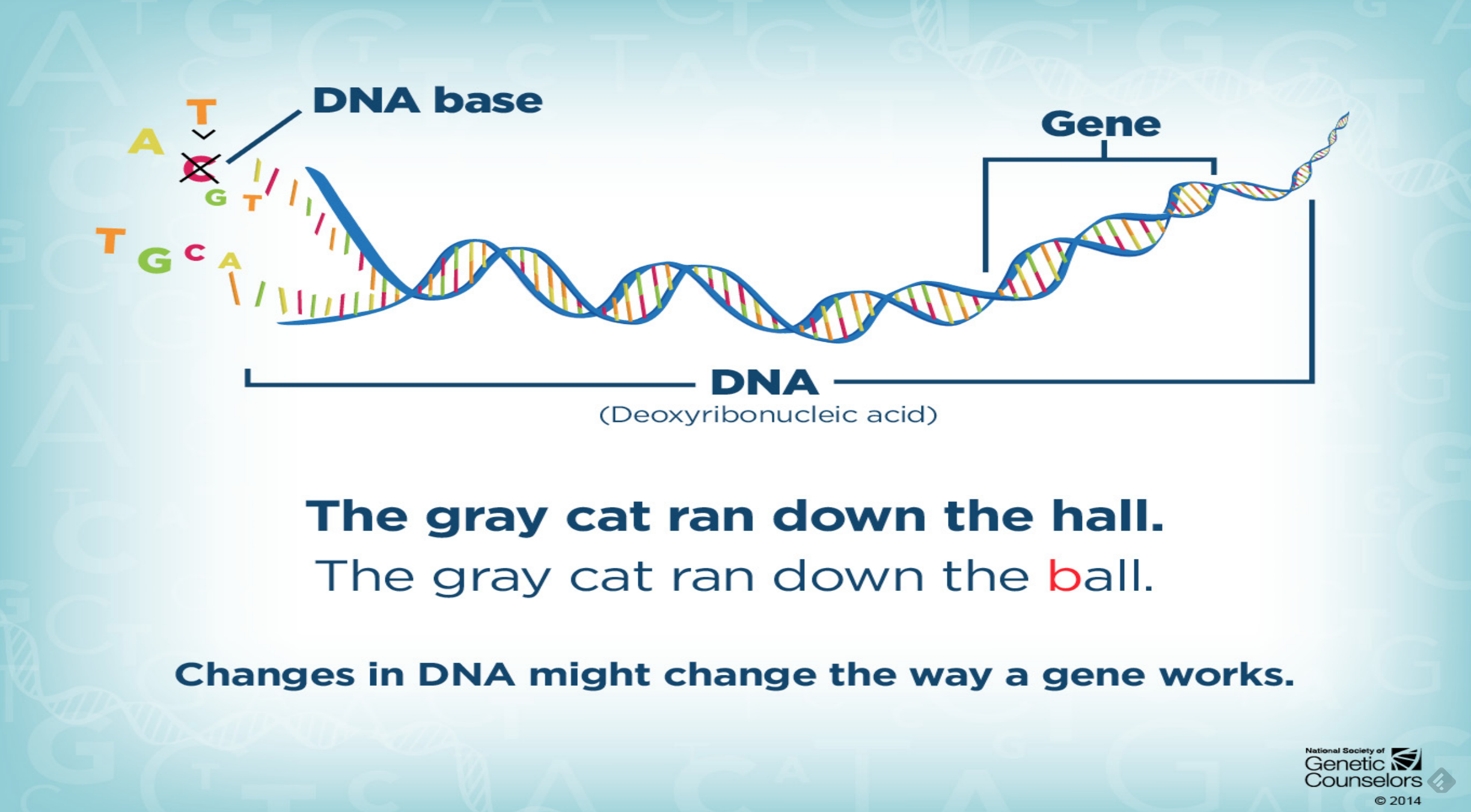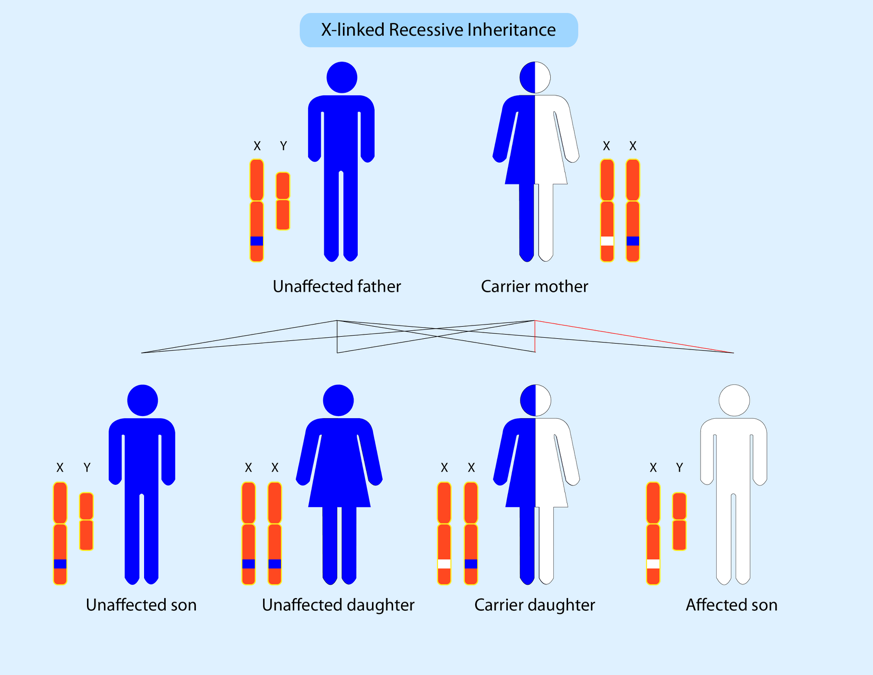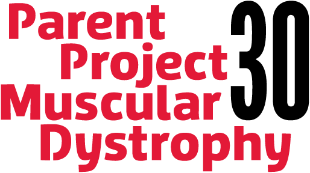Genetic Causes
Duchenne muscular dystrophy is caused by changes in a single gene in our body. Duchenne can be passed from parent to child, or it can be the result of random spontaneous genetic mutations, which may occur during any pregnancy. In fact, about one out of every three cases occurs in families with no previous history of Duchenne.
Read more to understand what causes Duchenne and how it can affect more than one person in a family.
What is the role of dystrophin?
Duchenne muscular dystrophy is caused by a change in the dystrophin gene. Genes are small pieces of DNA that contain the instructions for how to make a protein. The dystrophin gene is basically a recipe for how to make the dystrophin protein.

The dystrophin protein is critical for maintaining muscle cell structure and function. Dystrophin acts as a “shock absorber” that allows muscles to contract and relax without being damaged.
Without dystrophin, muscles are not able to function or repair themselves properly. The muscle membrane is easily damaged by normal day to day activity, creating tiny micro tears in the cell membrane. These tiny tears let calcium come into the cell, which is a toxic substance to muscle. The calcium damages and eventually kills the muscle cells, allowing them to be replaced with scar tissue and fat. The loss of muscle then results in a loss of strength and function.
Changes to the gene, called mutations, can lead to differences in the amount or size of the dystrophin protein. Duchenne occurs because there is not enough dystrophin protein in the muscle cells or the dystrophin protein present does not work correctly. Some types of mutations in the dystrophin gene cause Duchenne, and other types of mutations cause Becker.
The dystrophin gene is one of the largest known human genes, so it frequently acquires mutations. Thousands of different mutations have been reported in the dystrophin gene. It is important to keep in mind that no one causes gene mutations, and they cannot be prevented. Each of us carries mutations in some of our genes, though we usually do not know it.
How is Duchenne inherited?
In order to understand how Duchenne can occur one or more times in a family, it is helpful to understand some basic genetics. We as humans have 23 pairs of chromosomes, or 46 total, in every cell of our body:
- 44 autosomes (pairs 1-22)
- 2 sex chromosomes (pair 23)
The sex chromosomes in females are two X chromosomes. The sex chromosomes in males are one X and one Y. Each parent contributes one chromosome from each pair, so children get half of their chromosomes from their mother and half from their father. Males always get their X chromosome from their mother and their Y chromosome from their father. Females get one X chromosome from each parent.
It is important to understand chromosomes because the Duchenne gene is located on the X chromosome. Therefore, Duchenne is a X-linked condition and can be passed from women, who are carriers of the genetic mutation, primarily to their sons.

If a woman carries a mutation in the gene that encodes for her dystrophin, with each pregnancy she will have a 50% chance of passing on the gene with the mutation.
- Each time a carrier woman has a son, there is a 50% chance (or 1 out of 2) that he will be affected with Duchenne.
- Each time a carrier woman has a daughter, there is a 50% chance (or 1 out of 2) that she will be a carrier or a manifesting carrier.
Carriers have no control over which copy of their X chromosome they pass on to their children.
Duchenne can also occur without being passed from parent to child, as the result of random spontaneous genetic mutations, which may occur during any pregnancy. About 1 out of every 3 cases occurs in families with no previous history of Duchenne. In other words, it can affect anyone, and crosses all races and cultures.
Why does Duchenne primarily affect males?
Since females have two copies of the X chromosome, if one copy has a dystrophin gene mutation they are usually not affected because they have a second X chromosome (a “back up”) with a normal copy of the gene. However, since males have only one copy of the X chromosome, if that chromosome has a dystrophin gene mutation they will be affected with Duchenne or Becker because they do not have a second X chromosome like females. So the difference in the number of X chromosomes explains why Duchenne and Becker are most often seen in males.
How can females be affected?
Females with one dystrophin gene mutation are called carriers. Carriers have an increased chance of having sons with Duchenne and daughters who are carriers. Females carriers are usually not affected with Duchenne because they make enough of the dystrophin protein. However, females can have some symptoms of Duchenne, such as muscle weakness and heart problems. Though it is rare, some females can exhibit the classic symptoms of Duchenne. This is known as a manifesting carrier. All carriers should be checked by a healthcare provider familiar with Duchenne. Learn more about carriers and the carrier testing options available for potential carriers.
How does Duchenne occur in a family?
People with Duchenne end up with the dystrophin gene mutation in one of three ways:
- The dystrophin mutation is passed through the family. The mutation is passed through the family by carrier females, who may not know that they are carriers. It is likely that a mutation is passing through the family if a person with Duchenne has an affected relative. Sometimes a mutation can be present in the family even when there are no affected family members (just by chance, sometimes no males in a family are affected). There is nothing that can cause or prevent a genetic mutation from being passed from a parent to a child.
- The child’s mother has a new ( or ‘de novo’) mutation. Before the mother was born, there was a dystrophin mutation that happened by chance in the egg, sperm, or very early in embryonic development. Neither her mother nor father had the mutation. Since she has one copy of the dystrophin gene with a mutation and one copy without a mutation, she is a carrier. She passed the copy of the dystrophin gene with the mutation to her affected son. Usually the mother will not know that she is a carrier until she has an affected son. Women who carry a dystrophin gene mutation cannot control which copy of the gene they pass to their children.
- The child has a new (de novo) mutation. Before the child was born, there was a dystrophin mutation that occurred by chance in the mother’s egg, or very early in embryonic development. This mutation in the dystrophin gene caused the child to have Duchenne. The mutation is not present in any of the mother’s cells. About one in every three cases of Duchenne is caused by a new or spontaneous mutation in the affected child.





